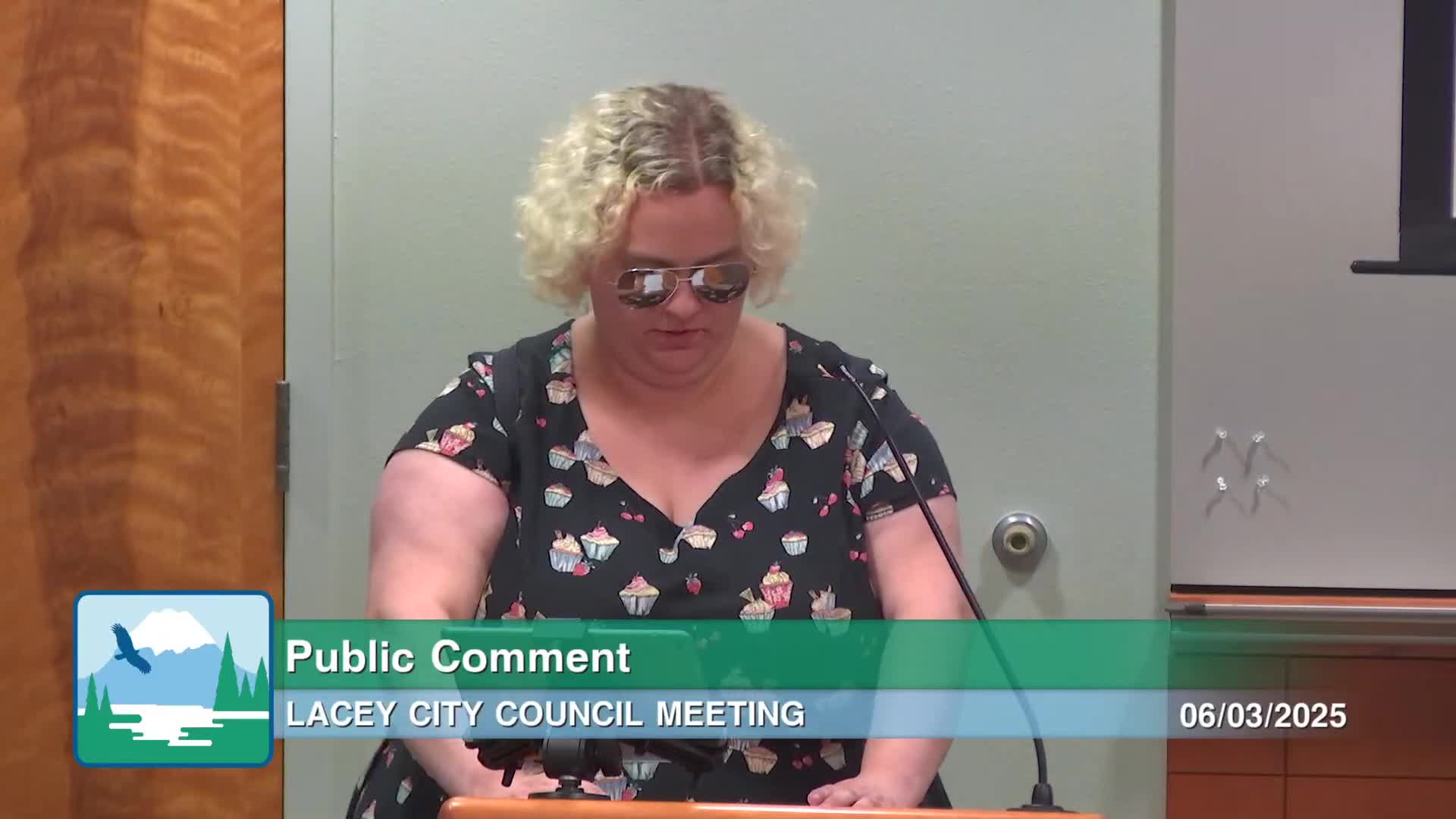Lacey City Council approves safety action plan targeting street crash reductions
June 04, 2025 | Lacey, Thurston County, Washington
This article was created by AI summarizing key points discussed. AI makes mistakes, so for full details and context, please refer to the video of the full meeting. Please report any errors so we can fix them. Report an error »

The Lacey City Council convened on June 3, 2025, to address pressing community issues, including a new safety action plan aimed at reducing traffic-related fatalities and injuries. The council unanimously approved Resolution 11 67, which establishes a "Target Zero" vision policy, committing to eliminate fatal and serious crashes on city streets by 2030.
The safety action plan, developed with a $68,000 federal grant from the Safe Streets for All program, highlights alarming trends in traffic safety. Over the past five years, Lacey has seen nearly 5,000 crashes, with 64 resulting in fatalities or serious injuries. The plan identifies key risk factors such as distracted driving, speeding, and unsafe pedestrian crossings, particularly on College Street, which has been flagged as a high-risk corridor.
Community engagement played a crucial role in shaping the action plan, with over 230 public comments collected through an online survey. Residents expressed concerns about dangerous intersections, particularly at College and Pacific, and the need for improved pedestrian safety measures. The council emphasized the importance of addressing these issues promptly, as the city prepares to apply for additional federal funding to implement safety improvements.
In addition to traffic safety, the council discussed amendments to the city’s investment policy, increasing the frequency of investment reporting from quarterly to monthly to enhance oversight. This change aims to align with state guidance without incurring additional costs.
The meeting also touched on ongoing efforts to address the affordable housing crisis in Lacey. The mayor reported on discussions with the Department of Natural Resources regarding the potential conversion of vacant DNR land into affordable housing. This initiative aims to leverage federal grants to improve sewer access to the land, making it viable for development.
As Lacey continues to grow, the council remains focused on enhancing community safety and addressing housing needs, reflecting a commitment to improving the quality of life for all residents. The next steps will involve further collaboration with county officials and stakeholders to ensure these initiatives move forward effectively.
The safety action plan, developed with a $68,000 federal grant from the Safe Streets for All program, highlights alarming trends in traffic safety. Over the past five years, Lacey has seen nearly 5,000 crashes, with 64 resulting in fatalities or serious injuries. The plan identifies key risk factors such as distracted driving, speeding, and unsafe pedestrian crossings, particularly on College Street, which has been flagged as a high-risk corridor.
Community engagement played a crucial role in shaping the action plan, with over 230 public comments collected through an online survey. Residents expressed concerns about dangerous intersections, particularly at College and Pacific, and the need for improved pedestrian safety measures. The council emphasized the importance of addressing these issues promptly, as the city prepares to apply for additional federal funding to implement safety improvements.
In addition to traffic safety, the council discussed amendments to the city’s investment policy, increasing the frequency of investment reporting from quarterly to monthly to enhance oversight. This change aims to align with state guidance without incurring additional costs.
The meeting also touched on ongoing efforts to address the affordable housing crisis in Lacey. The mayor reported on discussions with the Department of Natural Resources regarding the potential conversion of vacant DNR land into affordable housing. This initiative aims to leverage federal grants to improve sewer access to the land, making it viable for development.
As Lacey continues to grow, the council remains focused on enhancing community safety and addressing housing needs, reflecting a commitment to improving the quality of life for all residents. The next steps will involve further collaboration with county officials and stakeholders to ensure these initiatives move forward effectively.
View full meeting
This article is based on a recent meeting—watch the full video and explore the complete transcript for deeper insights into the discussion.
View full meeting
